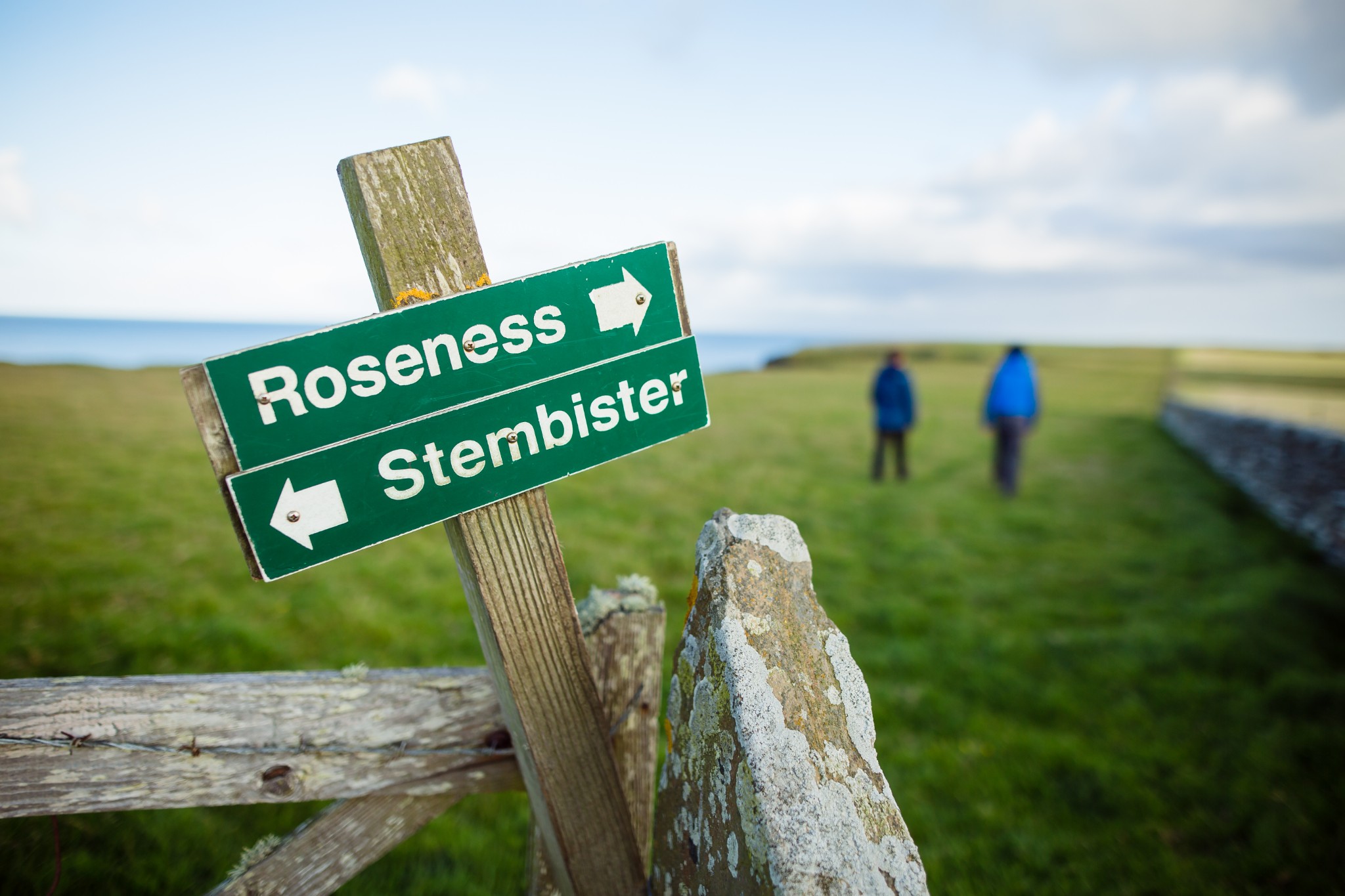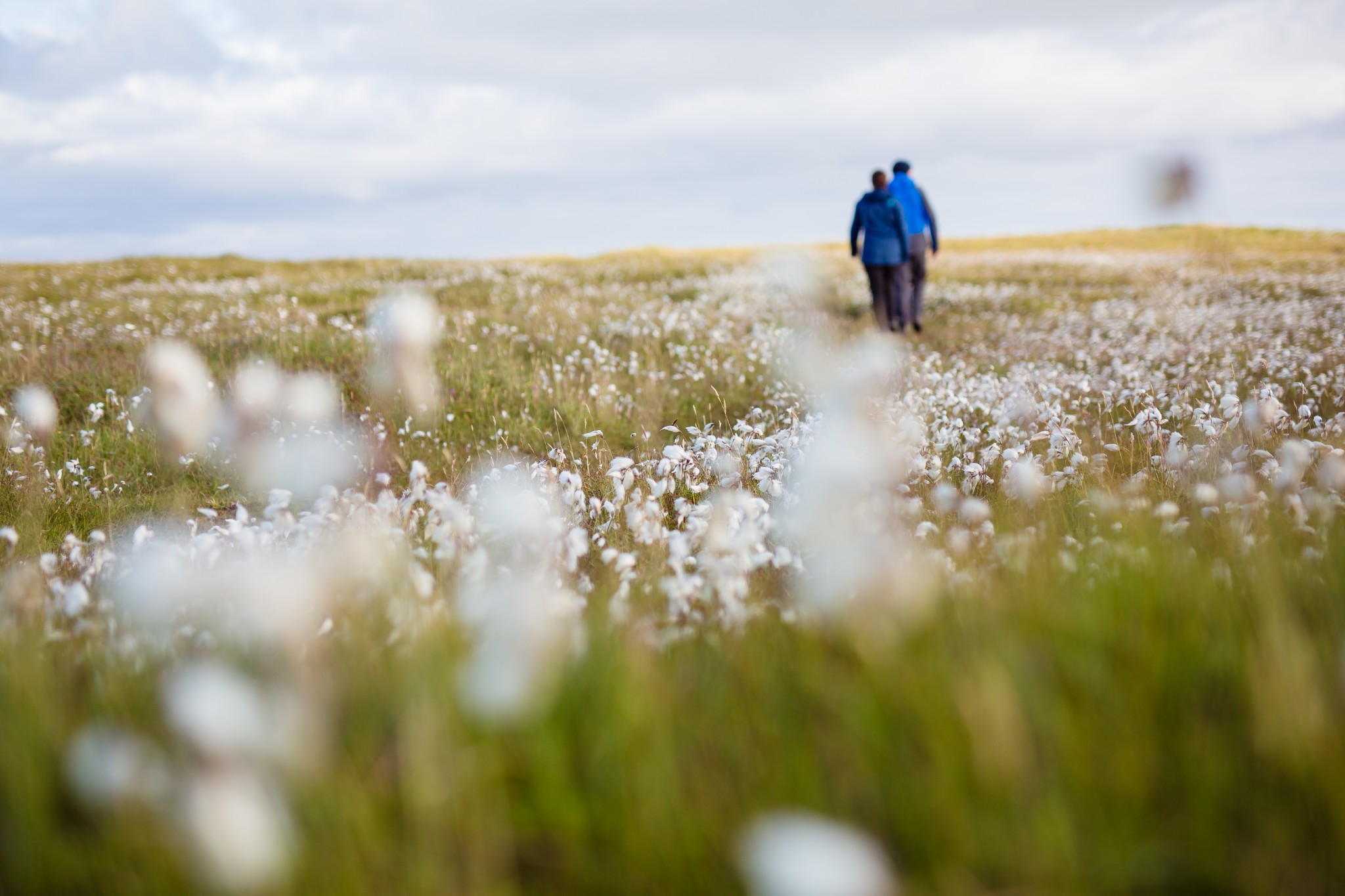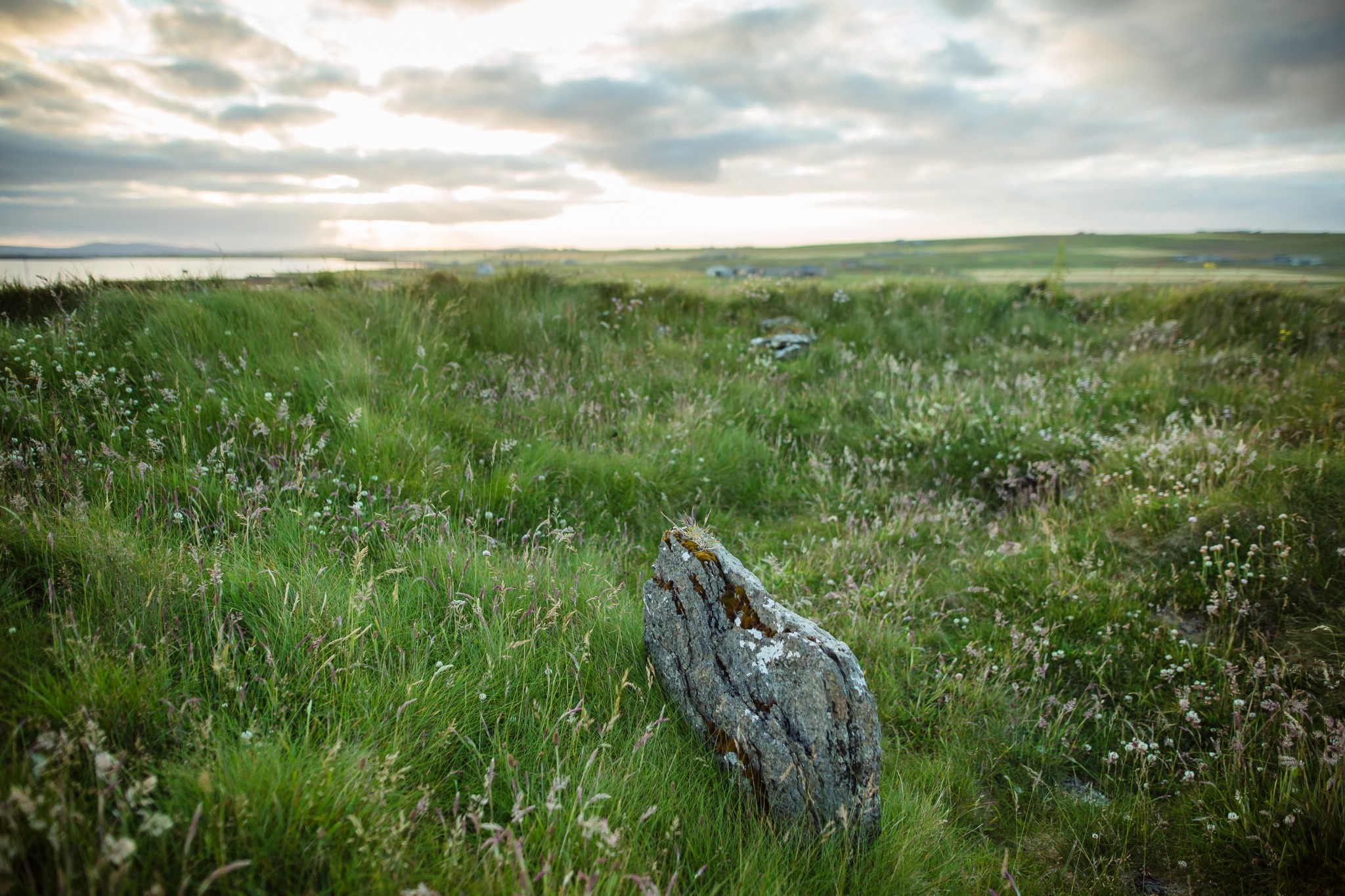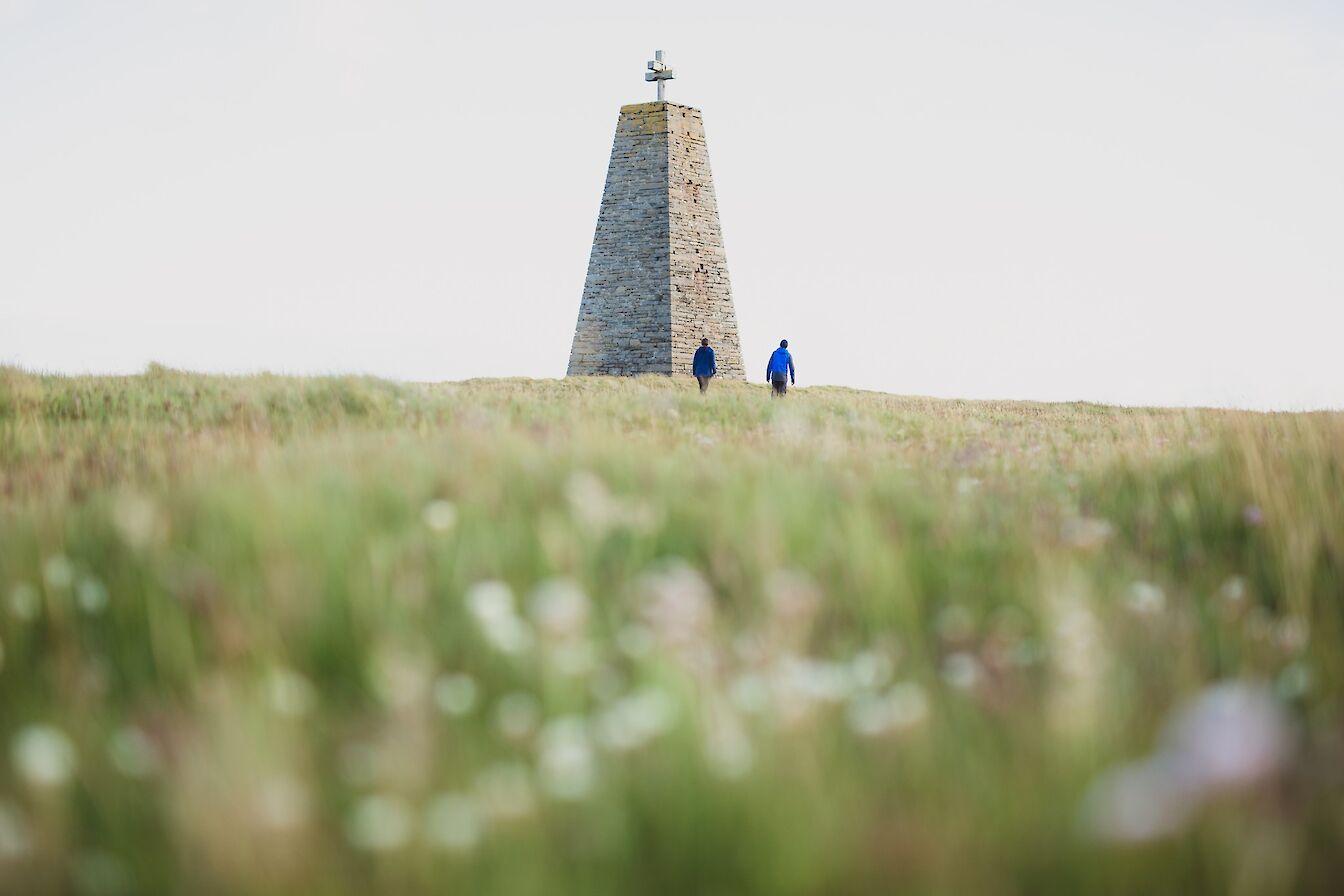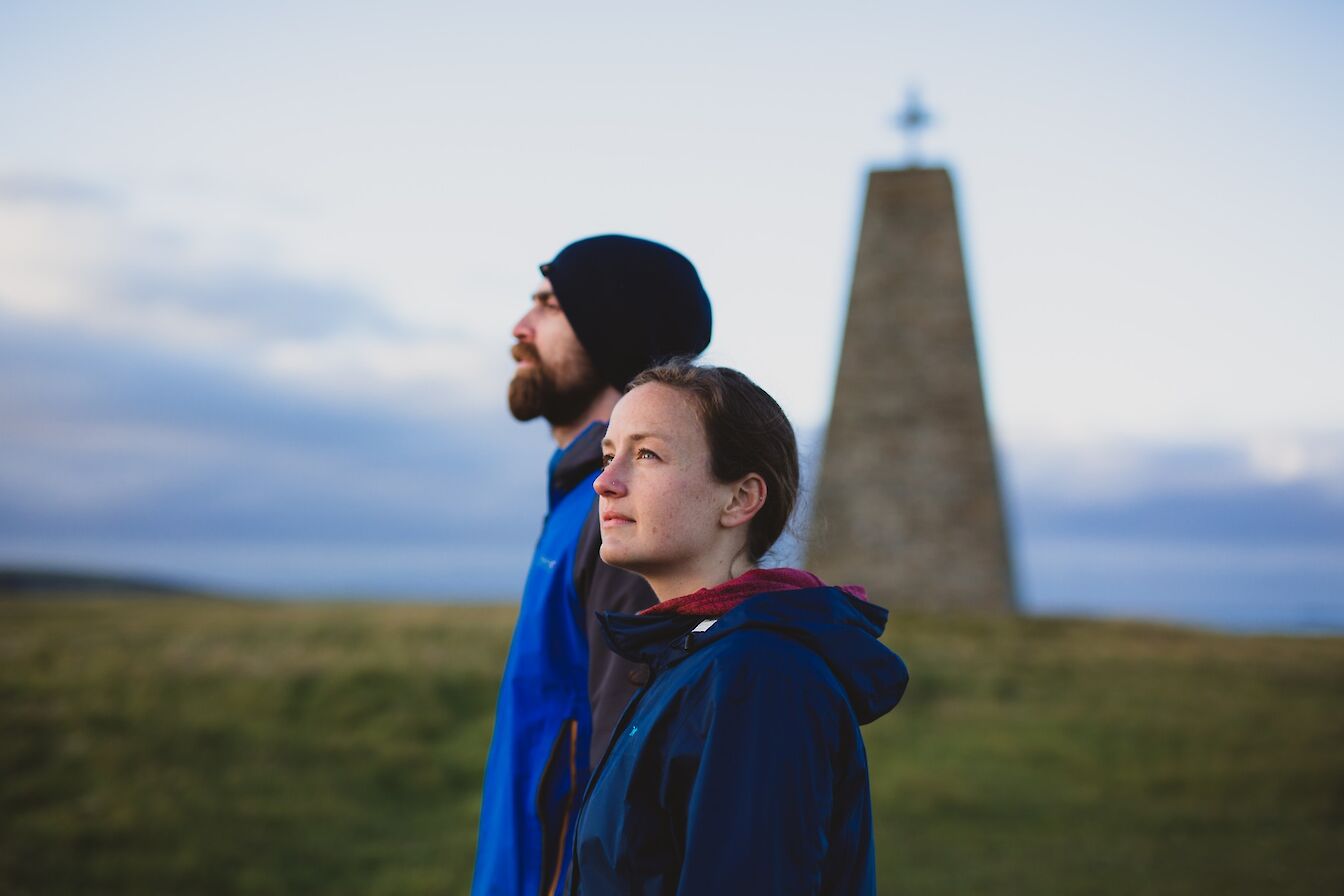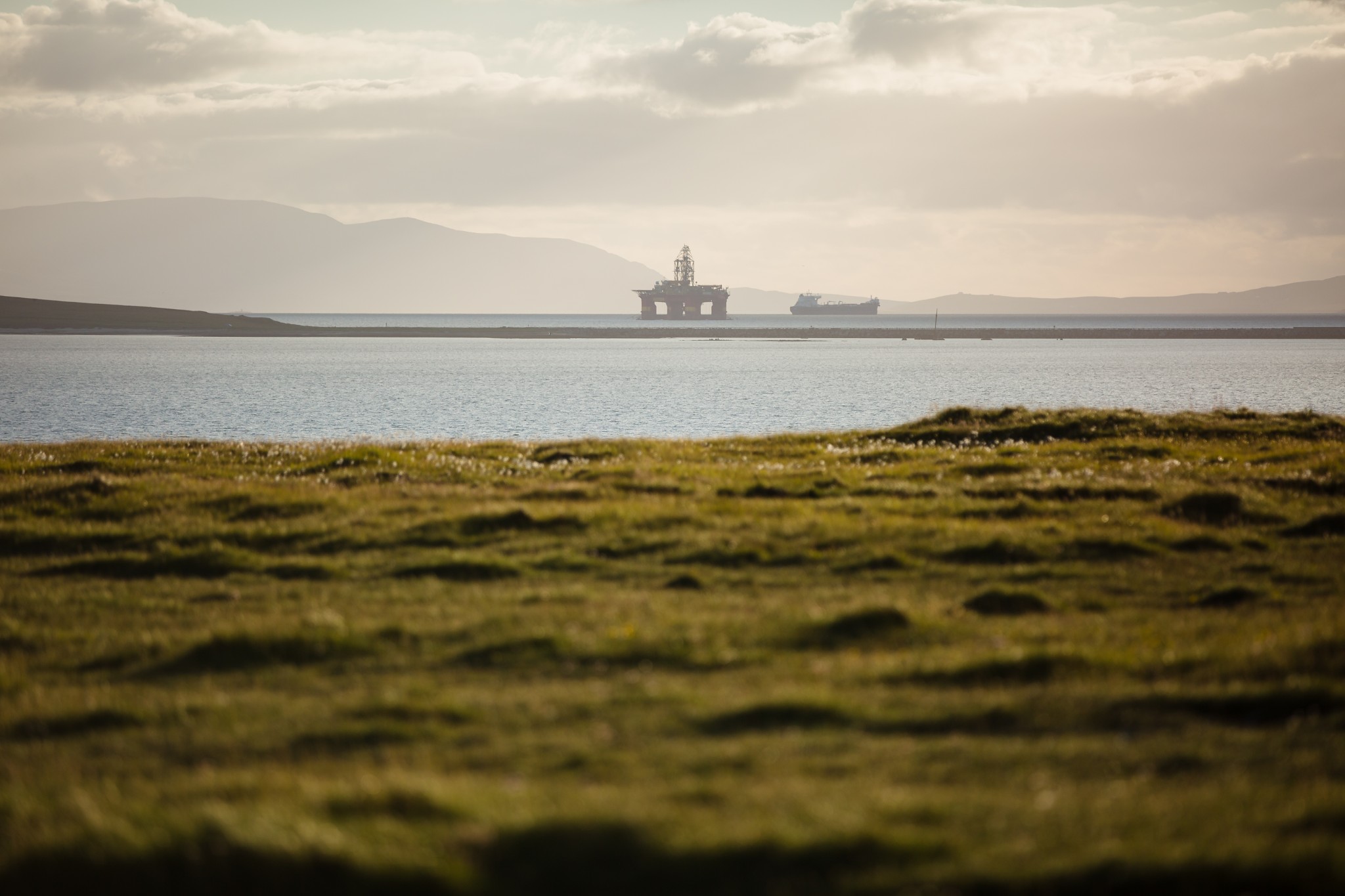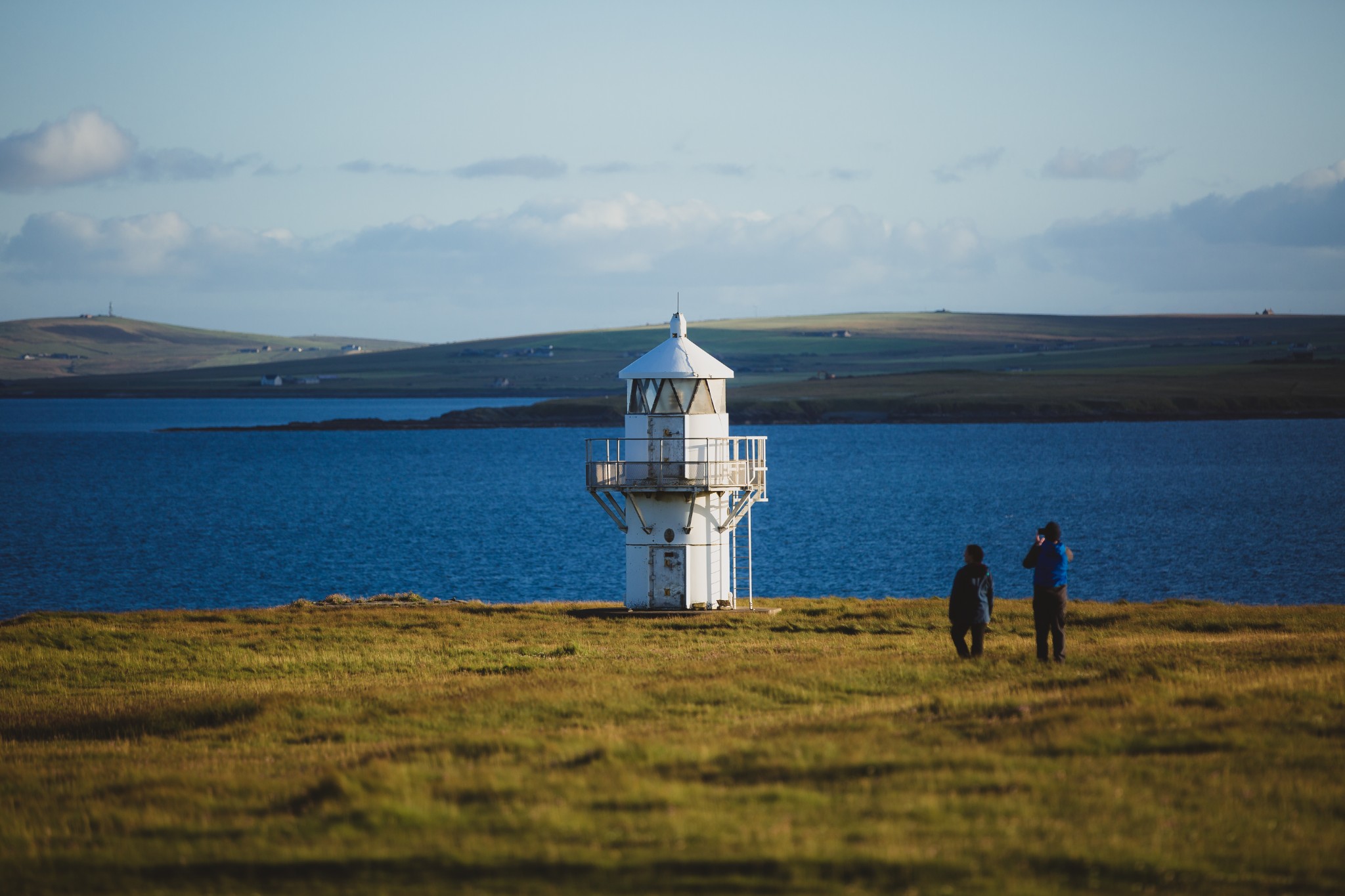This is a relatively short coastal walk to a low-lying headland overlooking the North Sea.
It's a glorious place to be on a long summer’s evening, with wildflowers and seabirds accompanying you on the route.
In contrast, an autumn or winter wander here offers a refreshingly bracing experience, especially in a southeast wind.
Whenever you choose to visit, this is a walk that's off the beaten track and perfect for a spot of solitude.
The route begins near the end of the Upper Cornquoy road in the east end of the parish of Holm, in Orkney's East Mainland. Park at the small car-park taking care not to block access for farm vehicles into the field. A small wooden gate leads to a short path between fields before emerging above low cliffs.
Turn right to head south along the coast until you come to a farm gate (0.6km). At this point, the landscape changes abruptly from green, agricultural land to heathery shallow bog, then coastal heath. In the summer, buttercup, cotton-grass and ragged robin abound in this section of the walk, before giving way to seapink and red and white clover.
After a further 300m, look out for a spectacular ‘gloup’ or collapsed sea cave. Now fenced off for safety, at one time it was surprisingly easy to find yourself almost blundering over the edge. Don’t be tempted to climb the fence for a closer look – the edge is overhanging and very unstable.
From here, head southwest for 200m rounding the head of a small cove before going directly south, across heathland for a further 150m, towards a small, low-lying mound. This is the North Cairn (or North Howe Cairn). Approximately 20m across and 2m high, the remains of this Neolithic chambered cairn have been severely eroded over millennia – a single upright slab in the collapsed centre defies time and the elements. It’s a fine spot to sit for a minute and take in the view northeast towards Deerness and out to the island of Copinsay, with its lighthouse and smaller satellite holms (1.2km).
Continue south to pick up the coast again. The crags here are popular with local rock climbers, being more reliably solid than much of Orkney’s more friable sea-cliffs.
As you continue south, the coast is increasingly dominated by a tall, square stone tower, topped with a double wooden cross. This rather sombre structure was built in 1867, probably as an aid to navigation, though there are suggestions that it was raised as a memorial to a shipwreck. Whatever its original purpose, it would have been a welcome ‘mark’ for herring drifters looking to negotiate Kirk Sound to the west, en-route to and from the fishing station at the village of St Mary’s.
In later years, German U-boat commander Günther Prien may also have used the tower to check his bearings, as he navigated through the same stretch of water under the glow of the northern lights during his audacious raid into Scapa Flow to sink HMS Royal Oak in 1939. That raid, with its horrific loss of life, led to the construction of the Churchill Barriers, sealing off the eastern entrances into the Flow. While the Barriers are a good 3km away across the water, the view from Roseness gives a real sense of how they utterly changed the geography of the linked islands. Communities which were once reliant on the vagaries of ferry timetables are now free to travel almost at will (except when stormy seas sweep crash over the causeways, rendering them unpassable).
A little further, beyond the old tower, stands a more modern aid to navigation. The small, squat lighthouse (2km) may lack the stature of its older neighbour but it is undoubtedly a cheerier presence. It’s a wonderful spot to stand and watch it blink away in the half-light of a summer’s evening. Admire the view of headlands receding gently southward down the coasts of Burray and South Ronaldsay and watch for the answering light flashing from the Pentland Skerries beyond, before turning north to retrace your route back to the car-park.
While this walk is fairly straightforward, it can be wet underfoot in sections and appropriate footwear is strongly advised. As with all coastal walks, great care should be taken while close to cliffs. Part of the headland is used as common grazing and is an important habitat for ground-nesting birds - dogs should be kept on a close lead at all times.
Visit the Scottish Outdoor Access Code website for more information and advice on how to enjoy the outdoors responsibly.
Further information
- Places of interest
This is a quiet corner of Orkney's mainland but there are still a few places worth stopping off if you have time. The Churchill Barriers are an iconic part of Orkney and well worth driving over. Once you cross the first Barrier you'll find the beautiful Italian Chapel on Lamb Holm, built by the same Italian POWs that helped construct the causeways during WWII. The tiny island is also home to the Orkney Wine Company and the J. Gow Rum distillery.
Back on the mainland and just north of St Mary's village is Celina Rupp Jewellery. From her workshop, Celina creates collections of jewellery and original artwork inspired by Orkney. Visitors are very welcome.
- Food & drink
There is a small shop in St Mary's village offering snacks and refreshments. Opening times vary so do check ahead before travelling. The Barrier View Café at Celina Rupp Jewellery in St Mary's Village offers a range of meals, light bites, and refreshments.
- Transport & services
Orkney's X1 bus service runs from Kirkwall through St Mary's village and over the Churchill Barriers daily, but the beginning of the walk is still another four miles away. View the full timetable on the Orkney Islands Council website.
There is a public toilet in St Mary's village offering one gents’ toilet and one ladies’/accessible toilet.
A nice and easy leg stretcher with interesting coastal features and the added bonus of the lighthouse and tower, we spotted plenty of seabirds and wildflowers too. The directions given are very accurate and other than avoiding some sheep and bonxies, the route is pretty straightforward. We visited during a dry spell but I imagine it could get quite boggy after some rain. I also recommend stopping by Cornquoy Bay Treats at the farm just along from the parking area, if they're on a baking day then the homebakes are a must!
